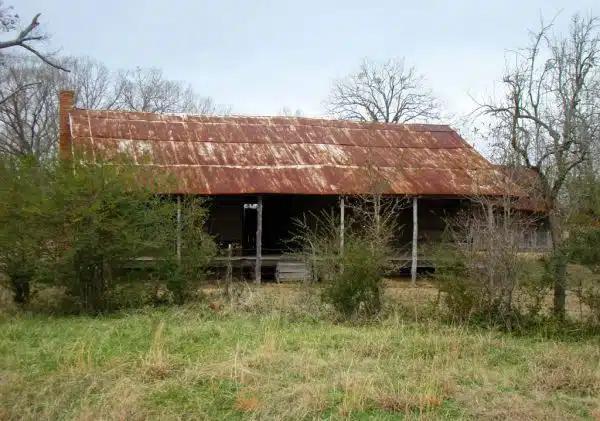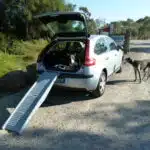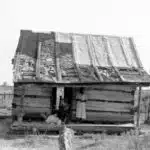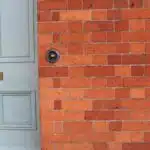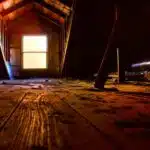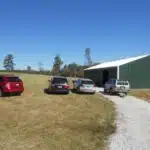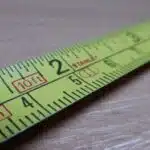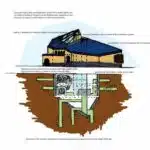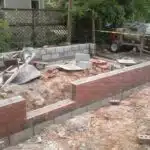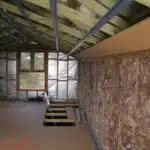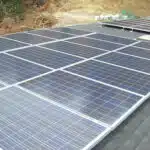As a dog house construction expert, I have had the opportunity to build and design various types of dog houses that cater to different breeds and sizes of dogs. Building a dog house is not only an enjoyable activity but also practical for pet owners who want to provide their furry friends with a comfortable and safe living space. In this article, I will share my expertise on how to build a dog house that meets your pet’s needs while ensuring it fits into your home’s aesthetic.
Constructing a dog house requires careful planning, adequate materials, and precise measurements. It is essential to consider the size of your pet, the climate in your area, and any design preferences you may have when building a dog house. With the right tools and knowledge, constructing your own dog house can be an affordable alternative to purchasing one from a store. By following these guidelines, you will be able to create a cozy and personalized space for your beloved pet.
Assessing Your Pet’s Needs
As a dog house construction expert, it is essential to assess your pet’s needs before building their abode. Just like humans, dogs have specific requirements that need to be taken into account when constructing their houses. A good way to start is by figuring out the size of the dog house needed. It should be spacious enough for your furry friend to move around and rest comfortably.
Another critical factor to consider is climate considerations. Your dog’s home should provide adequate insulation from harsh weather conditions such as extreme temperatures, wind, and rain. This means that you need to choose materials that can withstand different weather patterns in your area. A well-insulated house will keep your pet warm during winter and provide a cool place during summer.
Building a dog house requires careful planning and consideration of several factors that affect your pet’s comfort and safety. Proper sizing and insulation are crucial in ensuring that your furry friend has a comfortable home. Climate considerations also play an important role, so make sure you choose materials that can withstand different weather patterns in your area. The next step is choosing the right location for the dog house, which we will discuss in the subsequent section.
Choosing The Right Location
Now that you have assessed your pet’s needs, it is time to choose the right location for their dog house. One of the first decisions to make is whether the dog house will be indoor or outdoor. Indoor dog houses can provide a cozy and safe space for your pet, especially during cold or rainy weather. However, outdoor dog houses offer more natural ventilation, which can be essential during hot summer months.
Another important factor to consider when choosing a location for your dog house is sun exposure. While dogs need sunlight for vitamin D production, excessive exposure to direct sunlight can cause heat exhaustion and other health problems. Therefore, it is crucial to find a location that offers a balance of shade and sun throughout the day. For outdoor dog houses, placing them under trees or near buildings that provide shade during peak hours can be beneficial.
Ultimately, choosing the right location for your pet’s dog house requires careful consideration of their needs and environmental factors. Whether you opt for an indoor or outdoor location and prioritize sun or shade exposure, always keep in mind what will best serve your furry friend’s comfort and safety. Once you have chosen the ideal location for your pet’s home base, it’s time to move on to deciding on a design that meets both their needs and yours.
Deciding On A Design
Design considerations are an important aspect of building a dog house. The design should be based on the size of your dog and its specific needs. It is also important to consider the climate in which the dog house will be located, as this can impact the materials that should be used for construction.
When considering style options, there are many different types of dog houses to choose from. Some popular designs include A-frame, igloo, and barn-style houses. Each style has its own unique features and benefits. For example, an A-frame house provides a classic look while also offering a sloping roof that can help to prevent water from collecting on top.
Other design considerations include ventilation, insulation, and access points for cleaning or maintenance. It is also important to ensure that the dog house is raised off of the ground to prevent moisture buildup and potential pest infestations.
- Consider your dog’s size and specific needs when selecting a design.
- Take into account the climate in which the dog house will be located.
- Choose a style that offers both aesthetic appeal and functionality.
- Ensure proper ventilation, insulation, and access points for cleaning or maintenance.
With these design considerations in mind, you can select a style that not only looks great but also provides comfort and safety for your furry friend. In order to begin construction on your chosen design, it is important to gather all necessary tools and materials.
Gathering The Necessary Tools And Materials
Gathering the necessary tools and materials for building a dog house is similar to preparing a recipe in a kitchen. Just as a chef carefully selects the freshest ingredients to create the perfect dish, a dog house construction expert must also gather high-quality materials that will endure the test of time. Think of it as selecting premium ingredients for an unforgettable meal.
Budget considerations are important when gathering materials for constructing a dog house. You don’t want to overspend on unnecessary items, but you also don’t want to compromise on quality. It’s essential to take into account the cost of each material and determine how much you’re willing to spend. You can explore various options, including reclaimed wood or recycled plastic panels that will not only be budget-friendly but also eco-friendly.
Sourcing sustainable materials is equally important in today’s world where sustainability is becoming more critical than ever before. Consider using non-toxic insulation, low VOC (volatile organic compound) paint, and using sustainably sourced wood. By incorporating these sustainable materials, you’ll be making a conscious effort towards creating an environmentally friendly dog house that not only benefits your furry friend but also contributes positively to the world we live in.
Assembling all the necessary tools and materials will help make your dog house construction project run smoothly. In the subsequent section, we’ll discuss how making accurate measurements is crucial in ensuring every element of your design comes together perfectly without any errors or complications.
Making Accurate Measurements
- Accurate measurements are essential to the successful construction of a dog house.
- To make accurate measurements, it is important to use appropriate measuring tools such as rulers, tape measures, and levels.
- Marking reference points on the material to be cut is also important in order to ensure the pieces fit together properly.
- Estimating supplies needed for the project is necessary for both budgeting and ensuring that all necessary materials are on hand.
- Determining the size of the dog house should be done before measuring and cutting the materials in order to ensure the finished product is of the desired size.
- The accuracy of measurements should be double-checked throughout the process to ensure the desired results are achieved.
Measuring Tools
As a dog house construction expert, I understand the importance of making accurate measurements when building a sturdy and comfortable shelter for our furry friends. Proper measurement is crucial in ensuring that the dog house is secure and fits the intended space. It also helps to minimize common mistakes such as uneven walls or floors that can make the structure unstable.
One of the most essential tools for measuring in dog house construction is a tape measure. This tool provides accurate readings for length, width, and height, which are key dimensions to consider when designing a dog house. However, an alternative option to a tape measure would be a framing square or a level. These tools can help ensure that your measurements are straight and even from all angles.
Common mistakes when using measuring tools include not double-checking measurements before cutting materials or using incorrect units of measurement. To avoid these mistakes, it is recommended to always double-check your measurements before proceeding with any cuts or construction. Additionally, using metric or imperial units consistently throughout the process can eliminate confusion and errors.
In conclusion, taking precise measurements is an integral part of building a safe and sturdy dog house. Utilizing proper measuring tools such as tape measures, framing squares, and levels can help you achieve accuracy in your project while minimizing common mistakes. Remember to always double-check your measurements before cutting materials and use consistent units of measurement throughout the process.
Marking Reference Points
In dog house construction, taking accurate measurements is crucial in ensuring that the final product is safe and comfortable for our furry friends. However, measuring alone is not enough to guarantee a successful build. One must also be able to mark reference points accurately to ensure that all parts of the structure are aligned correctly. The most common tools used for marking reference points are measuring tapes and chalk lines.
Measuring tapes are useful for marking specific distances on materials before cutting or joining them together. Chalk lines, on the other hand, help to ensure that straight lines are drawn across surfaces, making it easier to cut or drill in a straight line. By using these tools together, one can achieve greater accuracy when marking reference points.
As with any task involving measurement and marking, it is important to double-check your work before proceeding with construction. Even small mistakes in marking reference points can lead to uneven walls or floors in the finished product, compromising its stability and safety. By taking extra care during this process, you can ensure that your dog house is built to last and provide a comfortable space for your furry friend for years to come.
Estimating Supplies
Making accurate measurements is a crucial step in building a durable and comfortable dog house. However, precision in measurement alone is not enough to ensure the success of your project. One must also have an accurate estimate of the supplies needed for the construction process. Calculating costs and choosing materials are two essential aspects that require proper attention.
Before starting any construction project, it is important to have a clear idea of the type and amount of materials required. This will help you avoid running out of supplies midway through the project or wasting resources by buying too much. The first step in estimating supplies is to create a detailed plan that includes all components of the dog house, such as walls, roof, floor, door, and windows.
Once you have a comprehensive plan in place, you can begin calculating costs and choosing materials based on your budget and preferences. Some popular materials used for constructing dog houses include wood, plastic, metal sheets, asphalt shingles or tar paper for roofing, insulation material for walls and floors, screws or nails for fastening parts together. By carefully selecting quality materials within your budget range and estimating their necessary quantities accurately, you can save time and money while ensuring that your dog house is built to last.
Cutting And Sanding The Wood
After making accurate measurements for your dog house, it’s time to move on to the next phase of construction: cutting and sanding the wood. This process requires a variety of woodworking techniques to ensure that each piece is cut precisely and sanded smoothly. Before beginning this step, it’s important to take proper safety precautions.
Firstly, make sure you have all necessary safety equipment such as gloves, goggles, and ear protection. It’s also important to use a sawhorse or workbench with clamps to secure the wood while cutting. When using power tools, be sure to read the manufacturer’s instructions carefully and follow them exactly. Always keep your hands away from blades and wear appropriate clothing.
Once you have taken all necessary safety precautions, it’s time to start cutting and sanding the wood for your dog house. Use a circular saw or handsaw to cut each piece according to your measurements. Then use an orbital sander or sandpaper wrapped around a block of wood to smooth out any rough edges or surfaces. Taking care in these early stages of construction will ensure that your final product is sturdy and safe for your furry friend.
Assembling the frame is the next step in building your dog house. With all pieces accurately measured and cut, you can begin fitting them together using nails or screws as appropriate. In this section, we will cover how to assemble the frame in detail so that you can get started with confidence.
Assembling The Frame
An important aspect of building a dog house is ensuring frame stability. A study conducted by the American Kennel Club revealed that an estimated 70% of injuries to dogs in outdoor enclosures are due to structural failures. Thus, it is crucial to construct a sturdy and secure frame for your dog’s house.
To achieve frame stability, use pressure-treated lumber or cedar wood as they have high resistance to rotting and insect damage. Cut the lumber into pieces according to your design plan and then assemble them using galvanized screws or nails. It is recommended to use a level during assembly to ensure all corners are square, and the structure stands straight.
Aside from frame stability, weather resistance should also be considered when assembling the frame. Choose materials that can withstand harsh weather conditions such as rain, snow, and strong winds. Additionally, apply a waterproof sealant on all sides of the wooden pieces before assembling them together. Doing so will prevent water from penetrating the wood and causing rot or mold growth.
Moving forward with our dog house construction project, the next step is adding insulation and ventilation for your furry friend’s comfort. To keep your pet warm during cold weather conditions, proper insulation must be installed within the walls and roof of the dog house. Simultaneously, proper ventilation must be provided to regulate temperature during hot weather conditions. Incorporating these features will create a comfortable living space for your pet while keeping them safe and protected in their new home.
Adding Insulation And Ventilation
Insulation materials are essential in building a dog house and must be chosen carefully to ensure optimal comfort for the dog. Some popular insulation materials include fiberglass, foam boards, and mineral wool. Ventilation strategies should also be incorporated into the design of the dog house, as proper airflow is necessary in maintaining the temperature. Such strategies can include the use of windows and vents to ensure adequate air circulation.
Insulation Materials
When it comes to adding insulation to your dog house, there are different types of materials that you can use. The type of insulation material that you choose will depend on your budget and the climate in which you live. The most common insulation materials include fiberglass batts, spray foam insulation, and reflective foil insulation.
Fiberglass batts are a popular option for dog houses because they are cost-effective and provide excellent thermal insulation. They come in pre-cut sizes that fit snugly between studs or joists, making installation easy. However, fiberglass batts can be irritating to the skin and lungs if not handled with care.
Spray foam insulation is another option for insulating your dog house. This type of insulation expands as it dries, filling any gaps or crevices in your walls or roof. While it is more expensive than fiberglass batts, it provides better thermal resistance and is waterproof. Reflective foil insulation is a cost-effective option that reflects heat away from the interior of your dog house during hot summer months.
In conclusion, when choosing an insulation material for your dog house, consider the different types available and their advantages/disadvantages. Fiberglass batts are a cost-effective option while spray foam provides better thermal resistance at a higher cost. Reflective foil insulation can also be used to keep your furry friend cool during hot weather conditions. Make sure to choose an insulation material that meets both your needs and budget requirements.
Ventilation Strategies
When it comes to designing a comfortable dog house, adding insulation is essential. However, it’s crucial to note that insulation alone is not enough to maintain an ideal temperature for your furry friend. Proper ventilation is also necessary. Ventilation allows fresh air to circulate in and out of the dog house, keeping the air fresh and breathable.
There are two main types of ventilation strategies: natural and mechanical ventilation. Natural ventilation involves allowing fresh air into the dog house through openings like windows, vents, or doors. This type of ventilation is cost-effective and straightforward but may not be sufficient in areas with extreme temperatures or high humidity levels. Mechanical ventilation involves using fans, blowers, or HVAC systems to regulate air flow. This type of ventilation is more effective than natural ventilation but can be costly.
Regardless of the type of ventilation you choose, it’s crucial to ensure that there is adequate air flow inside the dog house. Good airflow helps regulate temperature and humidity levels while preventing the buildup of harmful gases like carbon dioxide and ammonia. It’s important to consider proper placement of vents or fans, ensuring they do not cause drafts that could make the space uncomfortable for your pet.
In summary, when designing a comfortable dog house with insulation, it’s vital to also consider appropriate ventilation strategies. Choosing between natural vs mechanical ventilation depends on climate conditions and budget constraints; however, both options should prioritize maintaining adequate airflow inside the dog house for optimal comfort and health benefits for your furry friend.
Installing The Roof
The roof is an essential component of any dog house as it provides protection from the elements. When installing the roof, it is crucial to take into consideration the type of roofing materials that you will use. The two most common types of roofing materials for a dog house are asphalt shingles and metal roofing sheets.
Asphalt shingles are a popular choice for many homeowners due to their affordability and durability. These shingles come in a range of colors and can be easily installed with roofing nails. Metal roofing sheets, on the other hand, are more expensive but offer superior durability and resistance to weathering. They are also lightweight, making them easy to install.
When installing the roof, it is important to ensure that it is waterproofed properly. Without proper waterproofing, rainwater can seep into the dog house and cause damage to both the interior and exterior. Tips for waterproofing the roof include using a layer of felt paper underneath the shingles or metal sheets, applying a coat of sealant over the entire surface area, and ensuring that all seams are properly sealed with silicone caulk.
To further protect against leaks or water damage, consider adding a sloping angle to your roof design. This will allow rainwater to run off quickly rather than pooling on top of your dog’s house. Additionally, make sure that your roof is securely fastened to prevent strong winds from dislodging it.
With your roof successfully installed and waterproofed, it’s time to move onto creating an entrance and exit point for your furry friend.
Creating An Entrance And Exit
The roof is undoubtedly one of the most crucial components of any dog house. It protects your furry friend from rain, snow, and other weather elements while ensuring that your pet remains warm and comfortable inside. However, before proceeding to create an entrance and exit for your dog house, it’s important to choose a roof that suits your needs.
Different types of roofs are available in the market today, including gable, flat, and pitched roofs. Each type has its advantages and disadvantages, meaning you should choose one based on your preferences. For instance, if you reside in an area with heavy rainfall or snowfall, a pitched or gable roof would be appropriate since it allows these elements to run off easily.
Once you’ve installed the roof on your dog house, the next step is creating an entrance and exit. This process involves cutting out a hole in one of the walls close to the ground level to allow easy access for your furry friend. Additionally, ensure that the opening is big enough for your dog to enter and exit comfortably but not too large such that outside elements can get in.
With an entrance and exit in place, you’re almost done constructing a comfortable abode for your beloved pet. However, before wrapping up this project completely, consider adding some finishing touches such as painting or insulating the walls. Such measures will go a long way in keeping your furry friend comfortable while training dogs or just relaxing inside their new home.
Adding Finishing Touches
Now that the basic structure of your dog house is complete, it’s time to add some decorative elements and weatherproofing techniques to make it both functional and aesthetically pleasing. The final touches will not only protect your furry friend from the elements but also give a beautiful touch to your yard.
To enhance the overall appearance of your dog house, consider adding some decorative elements such as window boxes or shutters. These features can be easily added using simple tools like a drill and screws. Window boxes can be filled with plants or flowers to create a cozy environment for your pup, while shutters will provide additional protection from harsh weather conditions.
In addition to enhancing the appearance of the dog house, you’ll want to ensure it’s fully weatherproofed. To do this, apply caulking around all joints and seams to prevent water from seeping in. You can also apply a coat of sealant or paint over the entire exterior surface, which will help protect against moisture damage and prolong the life of your dog house.
- Add a flower box beneath one window
- Install shutters on either side of the entrance
- Place an outdoor rug in front of the entrance
With these final touches completed, your dog house will be both functional and visually appealing. Now that your structure has been made weather-resistant with caulking and sealant/paint – you’re ready for painting or staining!
Painting Or Staining The Dog House
Adding a coat of paint or stain to your dog house not only enhances its appearance but also provides protection against the elements. Choosing the right color can be a fun and creative process, but it is important to consider how it will complement your yard’s existing colors and style. Neutral colors such as beige, gray, or brown are classic options that blend in well with any outdoor setting. However, if you want to make a bold statement, bright colors like red or blue can add a pop of personality to your dog house.
Once you’ve chosen the perfect color for your dog house, it’s time to apply a protective coat. This step ensures that your furry friend’s home is well-protected from rain, snow, and wind. Before applying the coating product of your choice, make sure that the surface is clean and dry. You may need to sand down any rough spots or blemishes on the wood before applying the protective coat.
Applying multiple coats of sealant or varnish will help ensure that your dog house stays protected for years to come. Allow each coat to fully dry before applying the next one. By taking these steps in painting or staining your dog house properly, you are providing not only an aesthetically pleasing space for your pet but also creating a durable structure that will last for many seasons to come.
As you finish up painting or staining the dog house with care and precision, placing it in just the right spot in your yard can be just as crucial. In order for Fido to feel safe and secure in his new home away from home, proper placement should be considered carefully.
Placing The Dog House In Your Yard
When it comes to placing the dog house in your yard, there are a few things to consider. One of the most important is landscaping considerations. You want to pick a spot that is level and won’t flood during heavy rains. Additionally, you should avoid areas with sharp rocks or other hazards that could injure your dog.
Another important consideration is weatherproofing techniques. You want to make sure that your dog house is protected from rain, wind, and other elements that could damage it over time. One way to do this is by using a high-quality sealant on the exterior of the house. This will help keep moisture out and prevent rot from setting in.
In addition to these factors, you should also think about how the dog house fits into the overall design of your yard. Ideally, it should blend in seamlessly with your existing landscaping and not detract from the overall aesthetic appeal of your property. With these tips in mind, you’ll be well on your way to creating a comfortable and safe home for your furry friend.
As we move forward with constructing a dog house suitable for our pets, keeping them clean and hygienic becomes crucial to their health and happiness. A dirty doghouse can lead to infections or infestations which can be harmful both for pets as well as humans around them. Therefore, it’s essential that we learn how to maintain and clean our dog houses effectively so that they remain a happy abode for our loyal friends.
Maintaining And Cleaning The Dog House
The first step of maintaining and cleaning the dog house is to make sure the house is built properly. All materials used should be of high quality, and must be properly sealed to protect against the elements. Cleaning the dog house should be done on a regular basis, and should include scrubbing and disinfecting surfaces. To maintain the dog house, it is important to inspect for potential issues, such as rot or pest infestation, and make any necessary repairs or adjustments.
Cleaning The Dog House
When it comes to maintaining a dog house, one of the most important aspects is cleaning. It not only keeps the structure looking aesthetically pleasing, but also helps to prevent the spread of germs and disease. To effectively clean a dog house, you will need several tools including a stiff-bristled brush, pet-safe disinfectant, and a hose.
The frequency of cleaning your dog house will depend on several factors such as the size of your dog, its shedding habits, and whether or not it spends most of its time outdoors. Generally speaking, it is recommended that you clean your dog house at least once a month. However, if you have multiple dogs or if your furry friend frequently brings dirt and debris into the structure, more frequent cleaning may be necessary.
To begin cleaning your dog house, first remove any bedding or toys that may be inside. Use the stiff-bristled brush to sweep out any loose dirt and debris from the floor and walls. Next, use the hose to spray down the interior and exterior of the structure. Once everything is thoroughly wetted down, apply pet-safe disinfectant according to the manufacturer’s instructions. Allow this solution to sit for several minutes before rinsing everything down with water again. Finally, let everything air dry completely before replacing any bedding or toys back inside the dog house.
Maintaining The Dog House
Maintaining and cleaning the dog house is an essential task for dog owners. Not only does it ensure that your furry friend has a clean and healthy living environment, but it also helps to prolong the life of the structure. To maintain the dog house, there are several factors to consider, including cleaning schedule and weatherproofing tips.
Cleaning the dog house should be done on a regular basis to keep it in good condition. The frequency of cleaning will depend on several factors such as the number and size of dogs, their shedding habits, and whether or not they spend most of their time outdoors. It is recommended that you clean your dog house at least once a month. However, if you have multiple dogs or if your furry friend frequently brings dirt and debris into the structure, more frequent cleaning may be necessary.
In addition to regular cleaning, weatherproofing is also important for maintaining the dog house. Weather conditions can cause damage to the structure over time if it is not properly protected. To protect against rain and moisture, make sure that the roof of the dog house is sloped downward away from the entrance. This will prevent water from pooling inside. Additionally, make sure that any gaps or cracks in the walls or roof are sealed with caulk or another weather-resistant material to prevent leaks during heavy rain or snowfall. By following these maintenance tips, you can ensure that your furry friend has a safe and comfortable place to call home for years to come.
Ensuring Your Pet’s Safety And Comfort
After cleaning and maintaining the dog house, the next step is to ensure that your pet is comfortable and safe. This involves choosing materials that are durable and suitable for the climate in which you live. One of the most important aspects of building a dog house is ensuring its durability. This means selecting materials that can withstand harsh weather conditions and are resistant to wear and tear.
When choosing materials, it’s important to consider the size of your dog, as well as its habits. If your dog likes to chew or scratch, for example, you’ll need to choose sturdy materials such as pressure-treated lumber or heavy-duty plastic. In addition, you’ll want to select materials that are easy to clean and maintain, so that you can keep the dog house looking its best.
Ensuring durability is not enough when building a dog house; you also need to make sure that it provides adequate comfort for your pet. This includes providing insulation during cold weather months, as well as ventilation during hot summer months. You may also want to consider adding features such as a raised floor or a porch area where your dog can relax in comfort.
By choosing appropriate materials and ensuring durability, you can build a dog house that will provide your pet with years of comfort and safety. Remember to take into account factors such as size, habits, climate, and maintenance when making decisions about construction materials. With proper planning and attention to detail, you can create a perfect home for your furry friend!
Conclusion
Building a dog house is not an easy task, but with proper planning and execution, anyone can construct a comfortable and safe home for their furry friend. Begin by assessing your pet’s needs, considering the size and breed of your dog. Then choose the right location and design for the dog house that suits your pet’s requirements. To ensure you have all the necessary tools and materials, make a list beforehand.
Accurate measurements are essential to building a sturdy and secure dog house. Once constructed, paint or stain the house with pet-safe products before placing it in your yard. It is crucial to maintain and clean the dog house regularly to prevent any health hazards. Finally, ensuring your pet’s safety and comfort should be a top priority when constructing their new home.
As a construction expert in building dog houses, I encourage pet owners to take on this rewarding project themselves. Building a custom-made dog house not only protects your furry companion from harsh weather conditions but also provides them with a sense of security. So why not give it a try? With patience and dedication, you can create an ideal living space for your beloved pet while saving money in the process!
Image Credits
- “Dog Run House” by jwinfred (featured)

